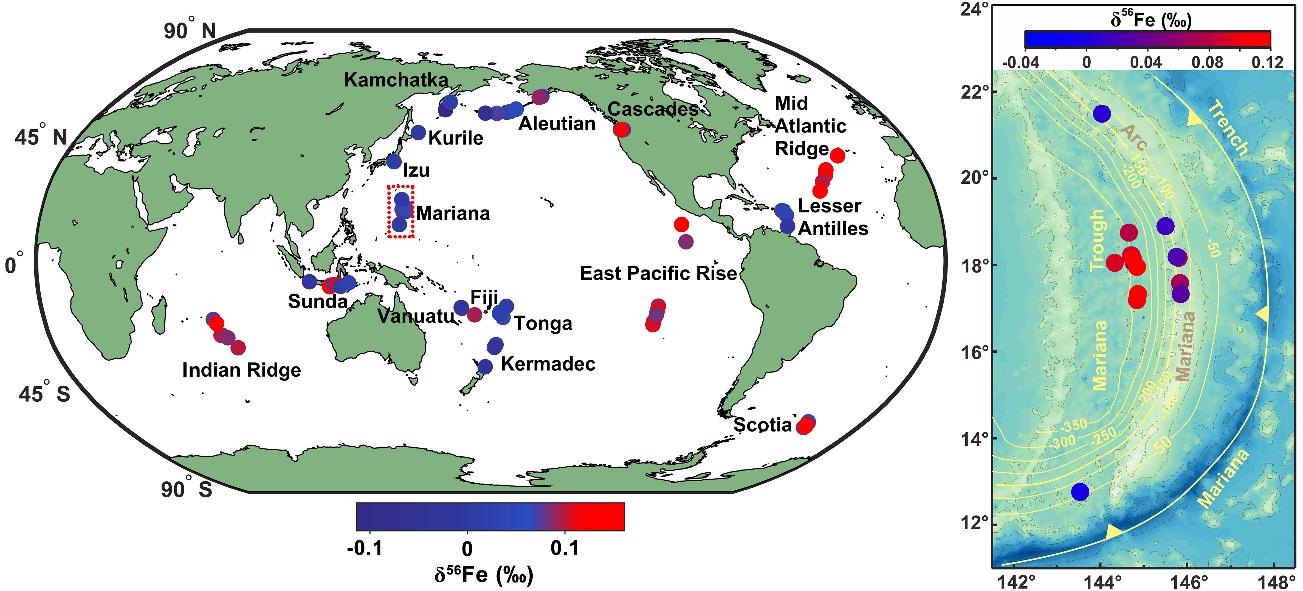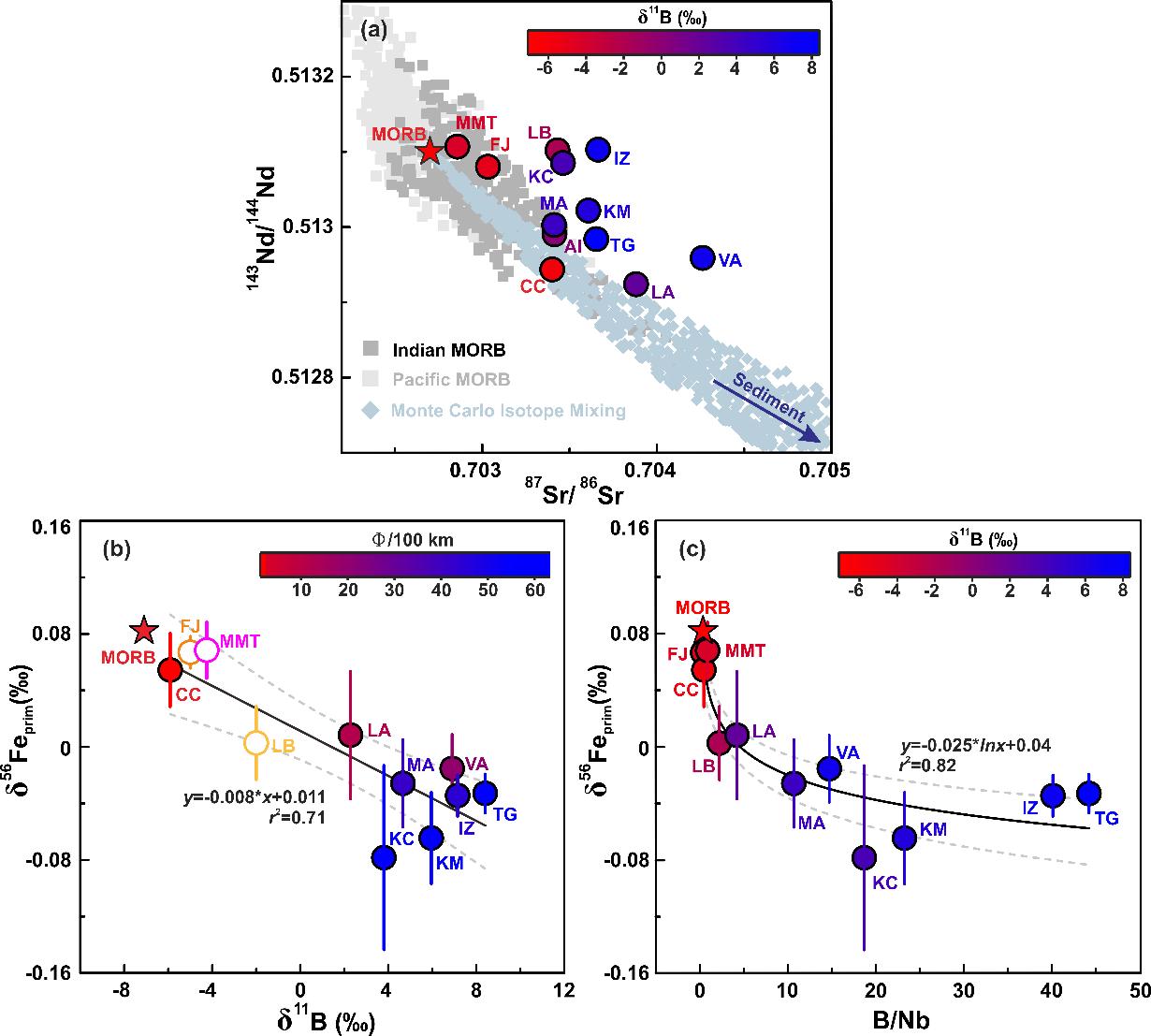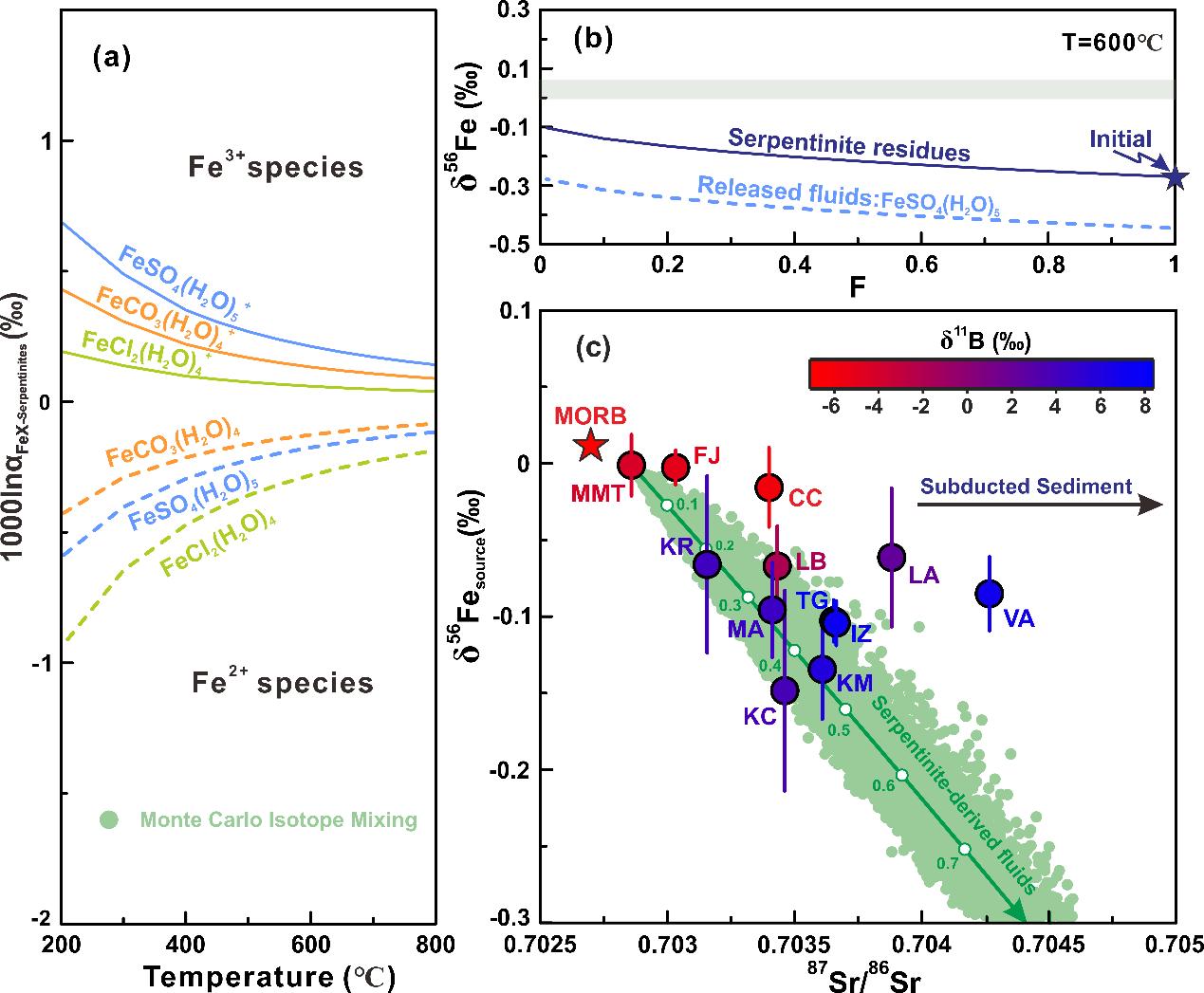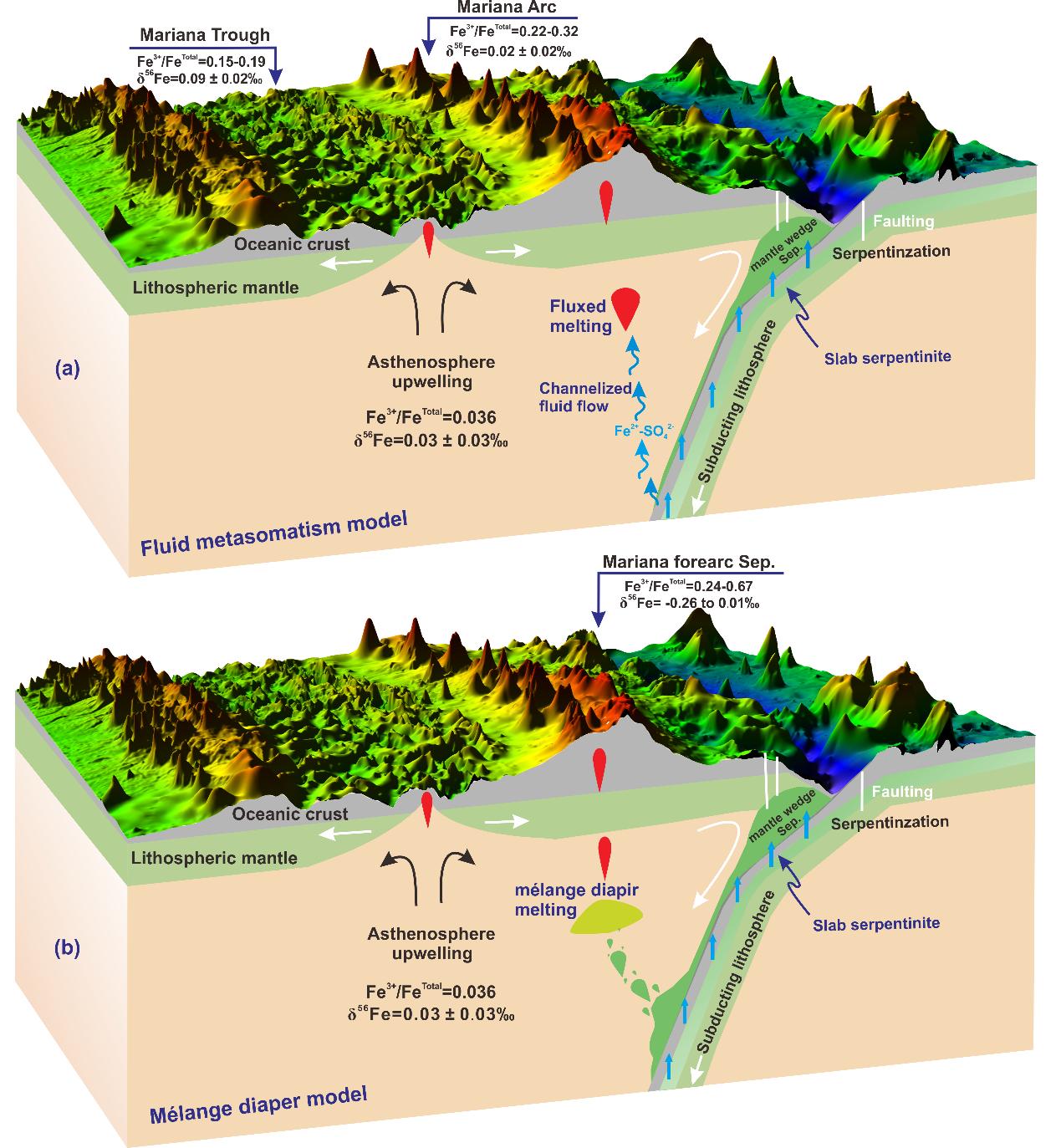Arc basalts typically have higher Fe3+/∑Fe ratios but lighter Fe isotopic compositions than mid-ocean ridge basalts (MORB), however, the reasons for these differences are unclear.
Recently, Dr. CHEN Zuxing of Prof. ZENG Zhigang's team from the Institute of Oceanology of the Chinese Academy of Sciences (IOCAS) and co-authors reported new Fe isotope data for fresh lavas from the Mariana subduction zone, along with available Fe-B-Sr-Nd isotope and B/Nb ratio data for global arc basalts, to constrain the role of serpentinite dehydration in sub-arc mantle oxidation.
The study was published in Geochimica et Cosmochimica Acta on Dec. 7.
Researchers found that the studied Mariana Arc basaltic lavas are similar to other arc basalts from cold subduction zones in the west Pacific, have lighter Fe isotope compositions than the MORB-like δ56Fe values of the middle Mariana Trough basalts, and the δ56Fe values of global subduction zone basalts are correlated with geochemical proxies for the addition of serpentinite-derived fluids (i.e., B isotopes and B/Nb ratios). This evidence indicates that the serpentinite-derived fluid contribution is a first-order control on the across-arc Fe isotope variations and isotopically light Fe in global arc basalts from cold subduction zones.
Theoretically, the Fe2+–SOx bearing fluids released by dehydration of subducted slab serpentinites or dragged-down forearc serpentinites at sub-arc depths have extremely light Fe isotope compositions. If the sulfate-rich fluids contain adequate Fe to metasomatize the sub-arc mantle, it can cause light Fe isotope compositions and high Fe3+/∑Fe ratios in arc basalts. Alternatively, as the forearc serpentinites are characterized by higher Fe3+/ΣFe ratios and significant Fe isotope fractionation with low values down to -0.26‰, directly melting the mélange containing dragged-down forearc serpentinites can produce arc magmas with light Fe isotopes and high Fe3+/∑Fe ratios. Overall, the contribution of serpentinite components to the sub-arc mantle can account for the decoupling of Fe3+/∑Fe and δ56Fe in global arc magmas.
"The fluid metasomatism model requires a high Fe content in the fluids (e.g., several wt.%), which necessitates additional experiments to determine whether this high Fe mobility in sulfate-rich fluids is applicable during serpentinite dehydration," said Dr. CHEN.
This work was supported by the National Natural Science Foundation of China, etc.

Fig.1 Fe isotope variations in global subduction zone basalts and MORB.

Fig.2 87Sr/86Sr versus 143Nd/144Nd of global subduction zone basalts compared to global MORB; correlations between δ56 Feprim values and the proxy for the addition of serpentinite-derived fluids (i.e., B isotopes and B/Nb ratios).

Fig.3 Theoretical model Fe isotopic behavior during serpentinite dehydration; and the effect of the released sulfate-rich fluids on the mantle sources of global arc basalts.

Fig.4 Schematic of two different models (fluid metasomatism vs. mélange diapir) depicting the variations in Fe isotopic compositions and Fe3+/∑Fe ratios of lavas from the Mariana subduction zone, a typical example of a cold subduction zone, caused by various contributions of subducted serpentinites.
Zuxing Chen*, Jiubin Chen, Landry Soh Tamehe, Yuxiang Zhang, Zhigang Zeng*, Ting Zhang, Wangcai Shuai, Xuebo Yin. (2022). Light Fe isotopes in arc magmas from cold subduction zones: Implications for serpentinite-derived fluids oxidized the sub-arc mantle. Geochimica et Cosmochimica Acta.
(Text by CHEN Zuxing)
Media Contact:
ZHANG Yiyi
Institute of Oceanology
E-mail: zhangyiyi@qdio.ac.cn
(Editor: ZHANG Yiyi)

